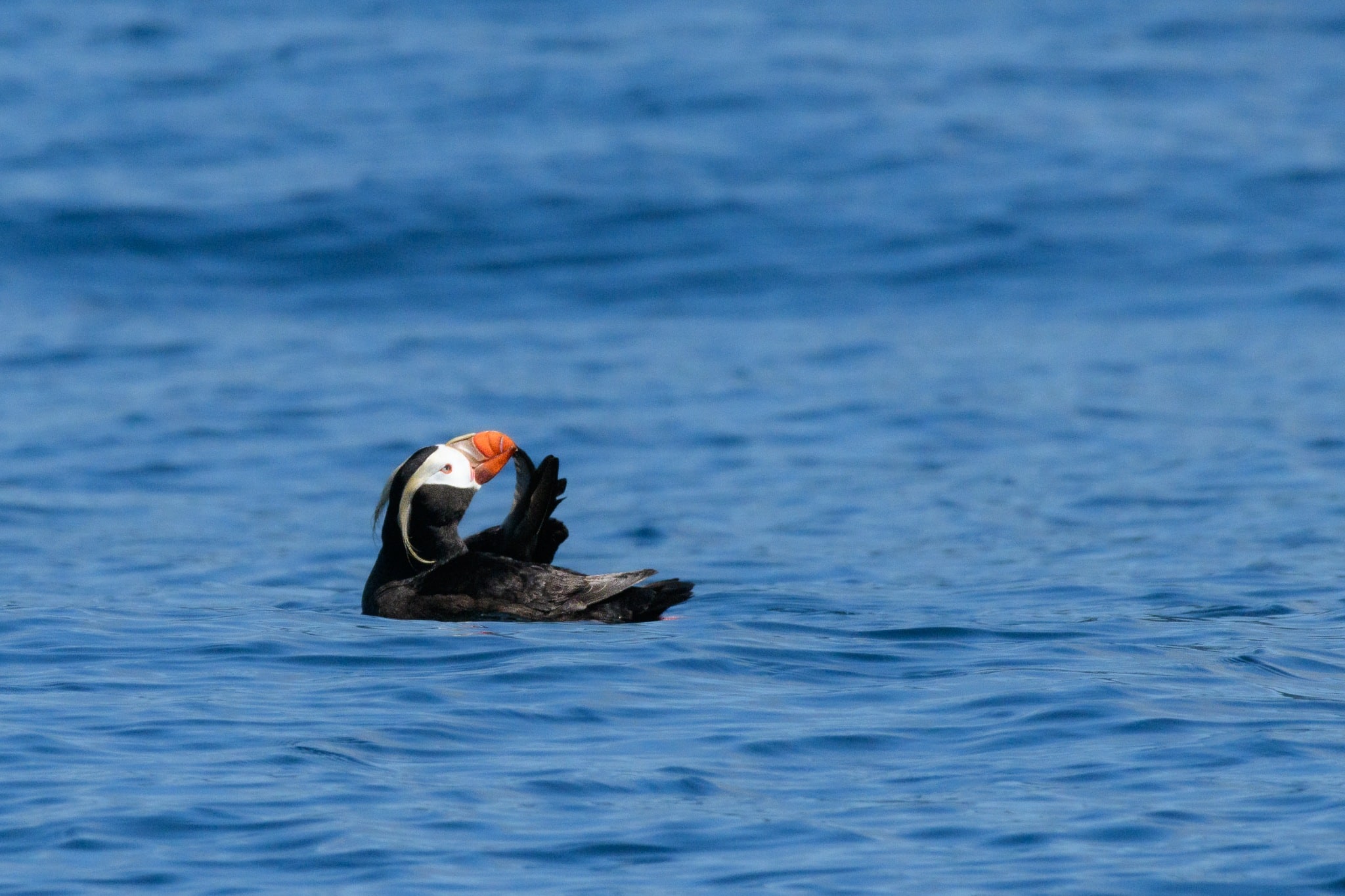Written by: Matt, Zodiac Captain – August 26th, 2021
While most will join us on our tours from Port Renfrew with whales as their primary interest, there are some guests who realize that these remote waters give access to bird species that they normally would not get a chance to see for themselves.
Birders – passionate about the incredible variety of birds found around the world, people who call themselves birders will travel far and wide to photograph birds. I remember well, a backpacking trip through Myanmar where Sarah and I had the incredible luck of seeing a sun bear in the jungle. After catching a glimpse of the animal, we headed back to basecamp to inform a group of birders of their chance to see this rare and beautiful bear. They barely even considered going to see the bear as they were so focused on a tiny owl perched in a tree 20 meters above us!
So, for Sarah and me, the topic of birders is often “tongue in cheek” as we explore remote waters in search of whales only to find out later that the highlight of the tour was one of the hundreds (or thousands) of shearwaters that our bird focused guests got to see!
Please don’t get me wrong – we love all of you, birders!! And it brings me great pleasure to introduce the many interesting feathered species that we can find during our tours. Some of the more sought-after bird species in the area include pelicans, tufted puffins, albatross, murrelets, jaegers, and phalaropes. While there are also many more common species that we see on our tours such as my favorite – the shearwaters!
There are three main factors that make the area excellent for viewing different species of diving birds and pelagic sea birds; massive cliffs overlooking the ocean for nest building, access to the open Pacific Ocean for migratory seabirds, and nutrient rich water full of fish, squid and plankton to eat.
Different species of diving birds are our most common sighting. These robust little birds such as the rhinoceros auklet, common murre and tufted puffin build their nest on cliffs that overlook the ocean. They use their wings while diving, effectively the same way that they fly, and they can easily dive more than 30 meters below the surface in search of food. Most notable of these birds are the tufted puffins with their bright orange beak, black and white feathers, and their “tuft” of golden feathers making a crest over their heads. These puffins are truly beautiful to look at and a sought-after animal for photography wherever they can be found.
These hard-working little divers face many challenges in the open sea, and most of all would be the presence of another bird who has taken up a less savoury lifestyle: the jaegers. Two species, the pomarine and parasitic jaeger are the pirates of the seabirds, and they know very well how to make other animals do all the hard work for them. They appear both strong and elegant with their long and tapered wings, sharp bill and piercing gaze as they patrol the open sea. Belonging to a group of birds known as skuas, they are found in areas where many other seabirds hunt for fish. They are extremely agile and powerful in flight and will outmaneuver any other bird at sea trapping them on the water and forcing that bird to give up their catch. We can sometimes witness these arial acrobatics as a jaeger chases down an unfortunate bird headed back to the nest. It is hard not to feel bad for the victim, but thankfully all the jaeger wants is the fish and the targeted bird will survive the encounter.
The open sea gives us chances to see some of those most well adapted migratory birds on the planet, often referred to as pelagic seabirds. These birds are not usually impressive swimmers, but they are more defined by their specific adaptations to fly long distances over the ocean. These birds, such as the albatross and shearwaters use something called dynamic soaring – an ability to harness the wind and air pressure over the ocean to glide non-stop while using barely any energy. This special form of flight is regularly witnessed during our tours as shearwaters fly all around us everyday. The Sooty Shearwater is particularly impressive at long distance travel, undertaking a remarkable migration from the southern hemisphere up to our north pacific waters totaling to 40,000 miles (64,000 kms) every year! They can even sleep while flying by shutting down half of their brain mid-flight to rest while rotating between hemispheres throughout the journey – this is called “unihemispheric slow-wave sleep”. While making my way offshore to find whales I will often look for shearwaters. These birds congregate on the water where the most food is available and the whales will be looking for that same area. Therefore, by looking for birds, we can find the whales. So, each tour I am very grateful for their presence!
Whether or not you come on tour with us with hopes to see birds, you may find yourself going home with a newfound fascination for these world travelling, ocean diving, whale finding, feathered friends!









